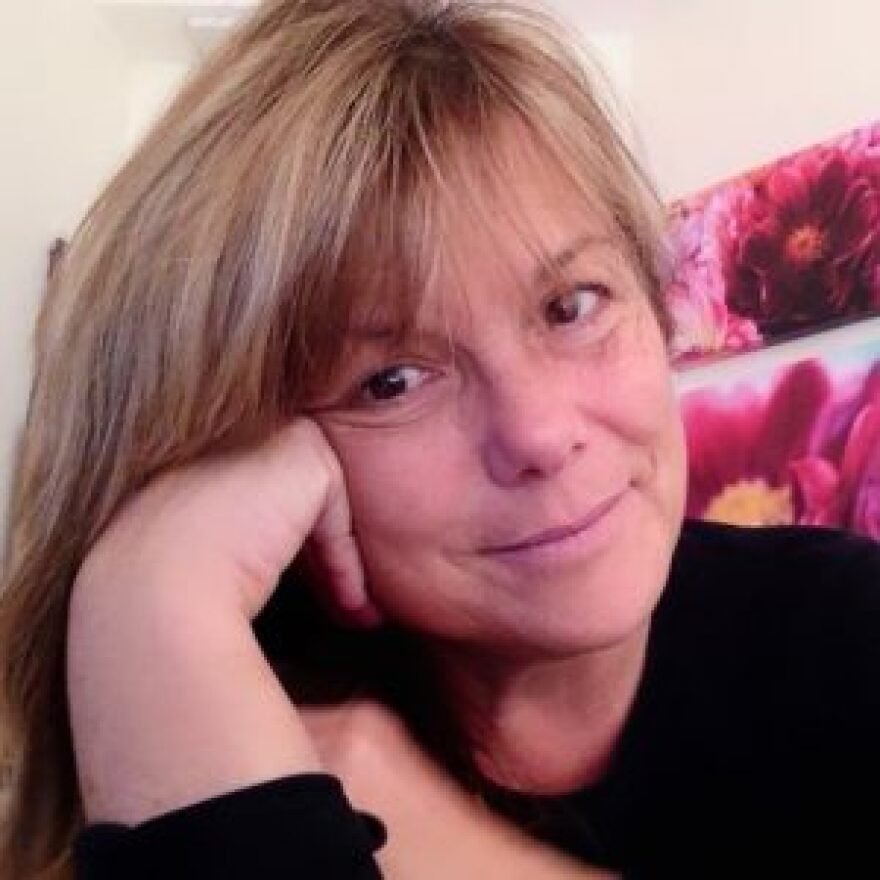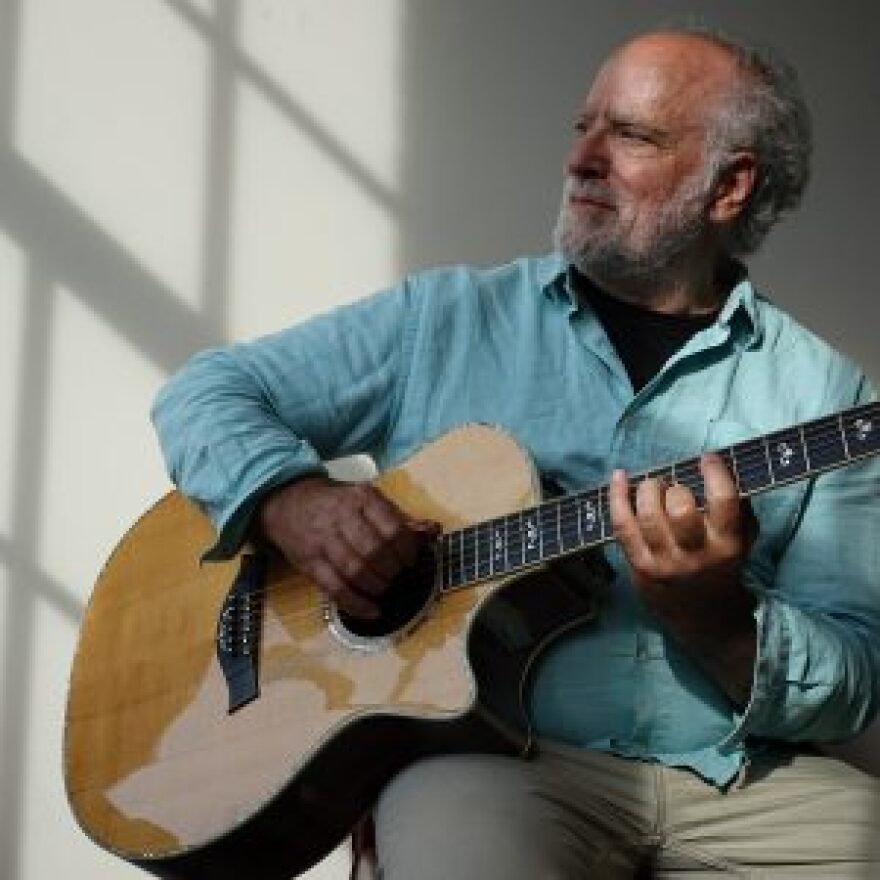Virginia’s Kid Pan Alley is on a mission to empower children to create their own music. The group works with children to give kids an opportunity to work together to write their own song – both music and lyrics.
With over 2700 songs written, Kid Pan Alley is celebrating their twentieth anniversary with a new album, Best Friends. The group’s Artistic Director, Paul Reisler along with Executive Director, Cheryl Toth, spoke with WMRA’s Chris Boros who asked Paul to explain how the group began.
This interview had production assistance from WMRA's Sara Amin

Paul Reisler: A dear friend of mine was organizing a three-week interdisciplinary workshop at the local elementary school and they asked me to work on music with the kids.
And I had absolutely no interest in teaching them songs like, she’ll be coming around the mountain or anything like that, but I had been teaching professional and semiprofessional songwriters for about 20 years at that point. And I thought, I wonder what it would be like to write songs with kids.
I walked in the first day, and we just wrote 6 songs on the very first day, and after that three weeks, there were about 60 songs. Kids have what you really need for song writing, which is imagination, especially elementary school kids. They can come up with some really creative, interesting things.

WMRA: So how does it work? Do they come up with topics for you to sing about, or are they actually like, hey here’s a melody? How does it work?
PR: We’ll ask them, “What do you want to write about today?”. We’ll get about 15 or 20 ideas up on the board, and we vote on it and then once I see that there’s sort of a direction forming from the brainstorming, I’ll talk to them about the importance of a first line.
And we’ll come up with the first line and then we’ll write a whole section of lyric, and then once we have the lyric for a section, I’ll have them clap the rhythm of the way in which they’re speaking.

WMRA: And you’re now up to 2,700 songs, is that right Cheryl?
Cheryl Toth: Yes, that right and still growing. Each year we add anywhere from 100 to 150 songs to the catalog.
WMRA: I was listening to them and Sara and I, my Producer, we we’re like these are good songs. They’re not cheesy kid’s songs at all.
PR: No, and that’s I think what’s so wonderful about it, is people think, oh it’s going to be a silly song about a cat, and instead they’re some of the deepest songs I’ve ever written.
WMRA: There’s one that I heard today called Skin. That was really pretty deep about being comfortable in your own skin. Do you remember how that song came about?
PR: I wrote that with kids down in Elkin North Carolina, and the school was like 99% white. I went in that day and said what do you want to write about, and they said racism.

WMRA: Wow.
PR: Skin, is just the suit your in. Skin, it can be pretty thin.
WMRA: Beautiful.
CT: In my prior life, I was an elementary school music teacher and ended up as an elementary school Principal. I was introduced to Kid Pan Alley when my PTA hired them to come to our school. My school was very diverse, and so I had a lot of children that English was their second language. And many of them had not yet gained the command of the language, but when Paul came in and started working with these children, and just in two days the empowerment, the common language, music just opens kids up. And they sing about loving music. “Life is good because we have music, so why don’t we all just sing along”, is one of the songs that came out of it.
WMRA: I just got chills, I really did.
WMRA: Talk about the name, Kid Pan Alley. How did that come about, how did you come up with that?
PR: Oh well you know, it only took me about 6 months to come up with what would be the most obvious name there could possibly be, because Tin Pan Alley was a place in New York where most of the Great American Songbook was written. It’s a great name because we can use it for intergenerational programs, it can be called Bed Pan Alley. You know... different things.

WMRA: The new album is called “Best Friends”. What’s special about this one?
PR: Well, all of our other albums we got very well-known artists, like Amy Grant, Delbert McClinton, Kix Brooks, Sissy Spacek. On “Best Friends”, we decided to get all well-known children’s artists, like Bill Harley, my dear friend John McCutcheon …
CR: Lisa Loeb
WMRA: Dang!
CR: I grew up in a very artistic family and I love music, so when I became a music educator, I realized that music spoke to children regardless of any other aspect of their life. Regardless of how they learned, regardless of what kind of economic environment they came from, music was something that brought everyone together.
WMRA: Have you ever had someone come up to you like 15 years later, now they’re an adult and they said “Paul, I remember when I was 12 and I was in a Kid Pan Alley thing”. Do you ever have that happen?
PR: All the time. It’s very heartwarming to me, that these songs stick with the kids. I mean I’ll run into a kid who I wrote a song with 18 years ago and he can sing the song to me.
WMRA: You probably maybe forgot that certain song, after 2,700 records!
PR: I can’t even remember people’s names; how can I remember 2,700 songs!

CT: I really want children to recognize that their voice is important and that what they think and what they feel, should be honored. I want them to find that creative place inside. Get comfortable with it and hold on to it for the rest of their lives.
PR: Well I think the most important thing is that they start to understand, that being creative isn’t just something for the few people who are in the employ of one of the three major record companies. But rather, everyday people can go and write amazing songs and they can be creative and take that creativity to anything they’re doing. Because you can be an artist as a farmer, and so if you can do that in whatever field you’re doing instead of just walking through the motions, that’s what I want them to remember.
WMRA: Paul Reisler and Cheryl Toff, from Kid Pan Alley, thank you both so much for coming in. What beautiful work you’re doing. Thank you.
PR & CT: Thank you Chris!



